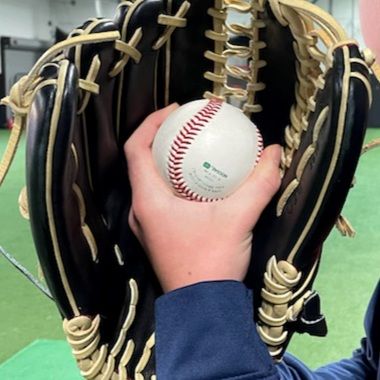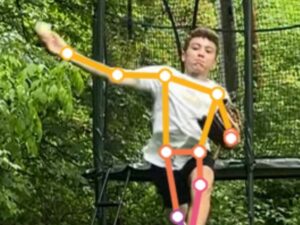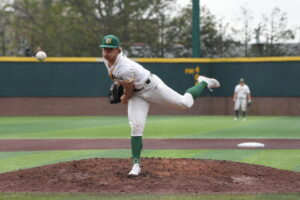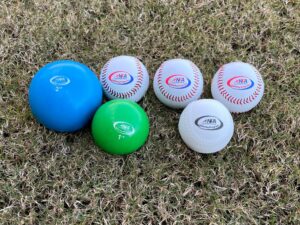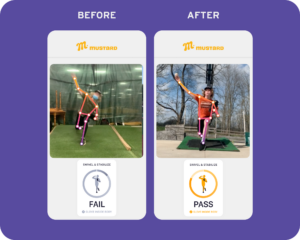By Tom House, PhD, with Lindsay Berra
There are many misconceptions out there about pitch grips, but I believe there are a few key points young pitchers should keep in mind to prevent injury and increase both velocity and movement as both their bodies and their deliveries grow and develop.
Proper grip on a baseball is simple and straightforward. Cut the ball in half with the thumb and middle finger, then arrange the wrist and forearm with a pre-set angle in the glove and deliver the pitch, without twisting, snapping or curving the wrist or fingers into release. Those actions only create stress on the elbow, not movement on the ball. It is the angle of the wrist and forearm that creates movement. There are two exceptions: a split finger or a forkball, but even on those pitches, the thumb is equidistant between the “V” of the fork. Every 1/8 inch by which the thumb and middle finger miss cutting the baseball in half will cost you eight inches at home plate.
Try this. Hold your arm straight out in front of you, with your elbow, forearm and wrist all in a straight line and your hand bent back toward your face, into extension. With your other hand, pull back on your middle finger, and push your middle finger back into that hand as hard as you can. That’s your fastball. Turn your hand sideways like a karate chop, keeping that tension on your middle finger. That’s your curveball. Go halfway between the fastball and the karate chop, continuing to push as hard as you can on your middle finger, and that’s a slider. Rotate the palm out and still push, and that’s a changeup or a screw ball. It is the angle of the wrist and forearm that determine what pitch you will throw.
When you’re learning, forget the tricky stuff. You hear about guys with crazy pitch grips who hold the ball off-center or putting sticky stuff on the middle finger, but if you actually want to hit the catcher’s glove, the only way you can advance the ball forward is if your middle finger and your thumb are cutting the ball in half. If you’re only throwing one-third of the ball, you may struggle to throw strikes. And if you manipulate late so your thumb and middle finger cut the ball in half, that’s when you put stress on your elbow. Your brain knows you can’t throw a strike holding only part of the ball, so you naturally try to change the angle of the wrist and forearm as the forearm is snapping forward, and that creates extra stress on the arm.
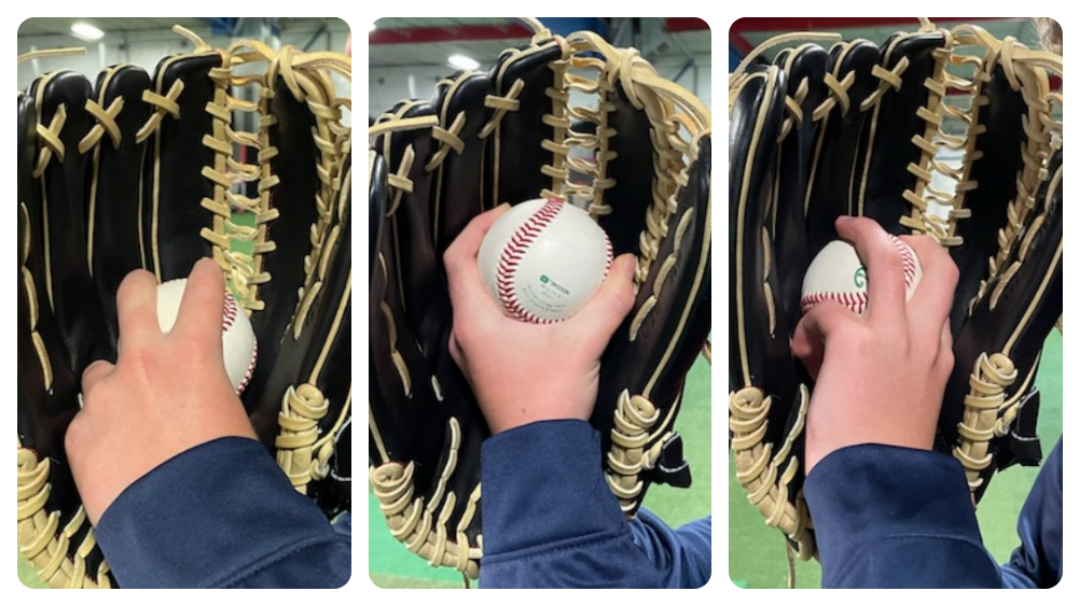
For young pitchers, pre-setting the forearm and wrist is key to good pitches and arm health. That means setting your hand position in your glove in the same hand position you want to maintain at release, that way it is fixed before you break your hands and begin your delivery. When pre-setting the forearm, begin with a fastball position, with the palm facing the target. All the other pitches adjust from there. If you turn the pinky down, supinating into a full karate-chop position, that is a curveball. 3/4 karate chop is a slurve, 1/2 karate chop is a slider and 1/4 karate chop is a cutter. If you pronate the hand with the thumb down, turning the palm fully outward, that presets a screwball, or a curveball that breaks the opposite way. 3/4 palm out is a change up, 1/2 palm out is a sinker and 1/4 palm out is a runner. It is the wrist and forearm angle that delivers the pitch grip, which is how the fingers and thumb cut the ball in half.
The wrist is a mobile joint. It must be stabilized with the muscles above and below it. If you have a floppy wrist slider, it doesn’t break and you give up a home run. When you flop a curve ball, it pops up out of your hand. But if you squeeze the ball really hard, it eliminates that floppiness by stabilizing the wrist and elbow. It makes the pitch safer, and it will also ensure all of your pitches come out of your hand looking like fastballs, and then break late in the zone. But to keep the wrist firm, you need to recruit strength from the fingertips and the forearms, and if you’re an 11 or 12-year-old, you may not have that strength yet. So you have to cheat by setting your wrist and forearm angle in your preset to recruit what strength you do have, and then squeeze the ball hard. I firmly believe the harder you squeeze the ball, the more you stabilize the arm. It’s proven in the data. It’s just a matter of changing the ideas and the thoughts that have prevailed for so long.
Pre-setting won’t be for forever. It can be a “tell” when you pre-set, because although you may be able to hide the hand position, you can see the wrist turn. Once kids learn how to properly release the pitch, they can just focus on their pitch grips and not on pre-setting. But honestly, if a young pitcher pre-sets his wrist and forearm to throw a great curveball at the Little League level, even if the batter knows it’s coming, the majority of them won’t be able to hit it.
Tyler Glasnow’s Curveball release (slow/side view) pic.twitter.com/7JNe1bsA6h
— Rob Friedman (@PitchingNinja) October 15, 2020
“Choking” or “burying” the ball does not reduce velocity or spin. This means putting the ball deep into your hand so there is no space between the ball and your palm. You can choke all the pitches. Everyone used to think you had to hold the ball loose in your fingers so your wrist could snap, but we now know that at release, the span from your middle finger to your elbow is as rigid as a two-by-four. The wrist doesn’t do anything until after the ball has left the hand. All the kids who have spin rate on their curve balls bury the heck out of it. If a kid has a sloppy wrist on pitches, which most of them do, I tell them to bury it, squeeze it and throw it as hard as you can, and what happens to the spin rate? It goes up. Additionally, if you start with the ball in the fingers, you can’t hold it long enough to make it look like a fastball, and good hitters will realize a curve ball is coming. And what finger is the ball going to leave last no matter what you do? The middle finger.
A word on curveballs. If you can properly grip a curveball, it is a less stressful pitch than a fastball, and it is easier to learn than a changeup. However, it must be thrown properly. If you “turn the doorknob” into release, hook or flop the wrist or “thumb” the ball, the pitch becomes more dangerous because it puts more stress on the wrist and elbow. But if you throw a curveball with the wrist and forearm preset into the karate-chop position, and you bury the ball and squeeze it to stabilize the mobile wrist joint, the pitch is very safe. Think about it; if you’re going to pound in a nail with a hammer, the strongest position from which to pound that nail is the curveball, karate-chop position.
A word on cutters. A cut fastball is probably the most stressful pitch you can throw. It’s thrown with close to the same arm speed as a fastball, but at a different angle and with more torque; the grip is more toward the karate chop than the fastball, and often, the grip is not centered between the middle finger and the thumb, but more over to the side. Kids don’t have the strength to set that angle and keep it with that arm speed, so they twist into release point to make the ball cut and that’s what stresses their elbows. Because your body is still developing into your 20s, I don’t recommend anyone try to throw a cutter until they turn 25 years old. It’s a great pitch, but it’s a grown-up’s pitch, not a teenager’s pitch.
If you’d like more great content from Mustard, and you’d like to evaluate and improve your own pitching mechanics, download the Mustard pitching app today.

